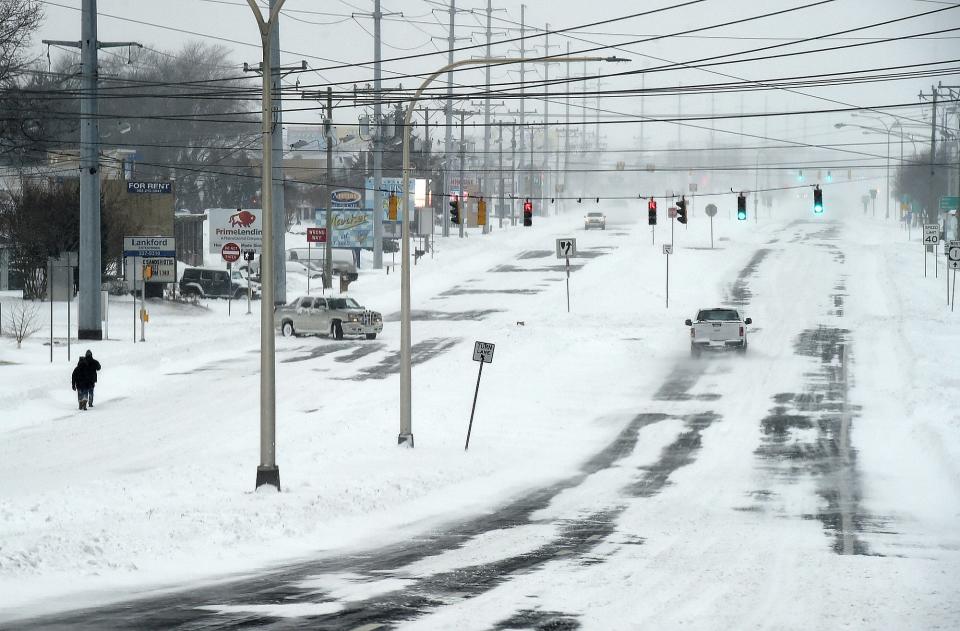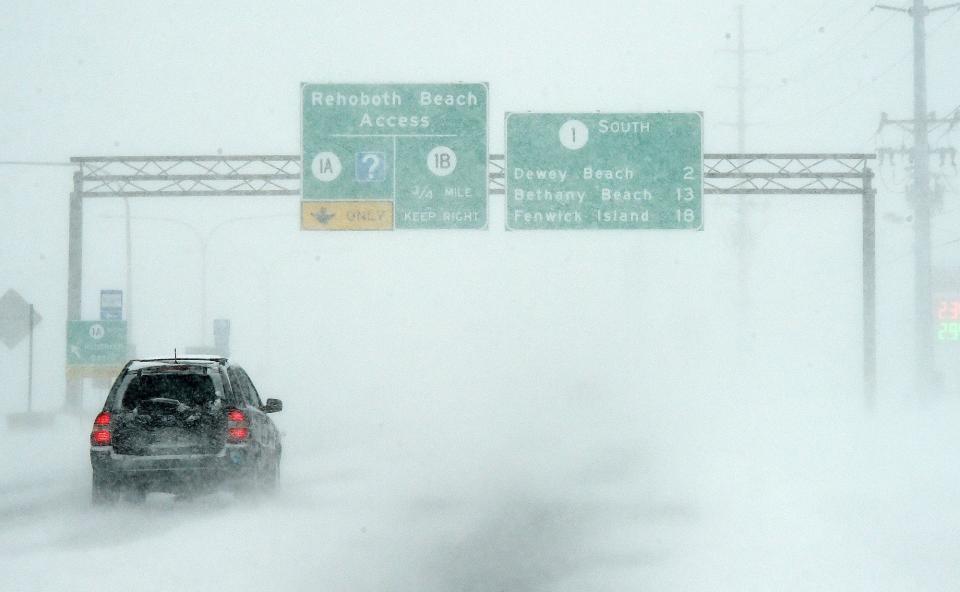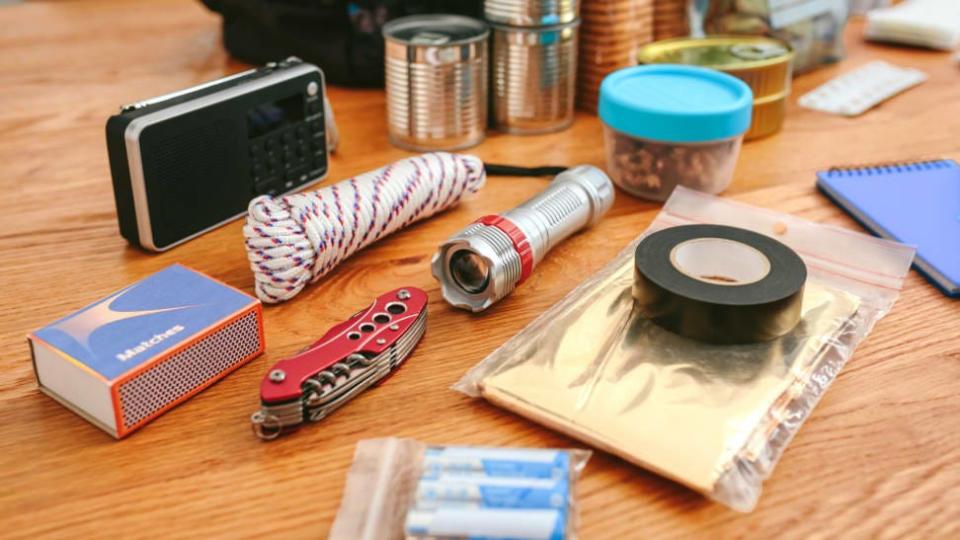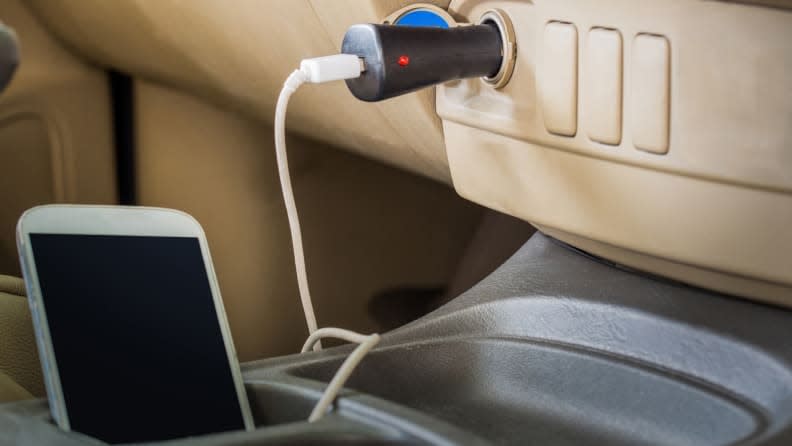Winter emergency car prep: What to keep in your car, check before driving this winter
Although Delaware doesn’t get as much wintry precipitation as some other states, it’s still a good idea to have a winter emergency kit stored in your car to help you during emergencies.
Sometimes it’s as simple as having an extra phone charger in the car or keeping a pair of comfortable shoes in the back in case you break down. Either way, you don’t want to wind up stuck on the side of the road without any handy supplies.

Whether you’re doing a routine commute to work or taking a road trip elsewhere this season, stocking your car with the necessary safety essentials and useful items could end up being a lifesaver during an emergency.
If you need a few pointers, here’s what’s recommended to keep you and your passengers safe while driving during the winter (and year-round).
Check your car before you go

Ideally, you should prepare your car for the incoming seasonal weather conditions before winter begins.
Now that winter is underway, performing a quick check of the following things if you have not done so yet will ensure you start your winter driving off on the right track, according to insurance company The Zebra:
Test your lights to make sure your turn signals and hazard lights work in the front and the back. If they put out less light than usual, clean or replace the bulbs or wires.
Swap your wiper blades if they leave streaks across your windshield. You can replace them with special winter wiper blades to combat heavy snow and ice.
Check your tires to ensure the tread isn’t too worn down and the air pressure isn’t low. Don’t forget to check the spare tire, too. This is also a good time to throw an extra tire inflator and gauge into your car for emergency use.
Inspect your car battery’s charge level yourself or at a local repair shop. Temperature drops can impact the battery and may make it more difficult to start your car in near-freezing temperatures due to a loss of cranking power.
When planning to drive during hazardous conditions of any kind, the Almanac recommends sharing your travel plans and route with someone before leaving. This ensures a point of contact is informed about your whereabouts in case of an emergency or loss of contact.
Emergency kit for your car

The National Weather Service recommends that you do not drive during hazardous winter weather whenever possible, but if you must be on the road, make sure you have an emergency kit handy in your car.
Here are emergency essentials you should add to your car, according to the National Weather Service, if you do not have them already:
Cell phone charger. Having both a portable charger and a car charger will help in situations where your car battery is dead or you must leave your car after being rescued. Note that it is not advised to leave your car during winter conditions.
First-aid kit, including any daily medications you take.
Jumper cables.
Road flares or reflective warning triangles in case of distress.
Water and nonperishable snacks.
Full tank of gas.
Tire chains or snow tires.
Flashlight or lantern, with extra batteries.
A full can of gas, preferably in a no-spill gas can.
Bag of sand or cat litter to offer traction if your car is stuck.
Winter gear like boots, gloves, hats, hand warmers and warm clothes.
Blanket.
Tow rope.
Snow shovel, ice scraper and snow brush.
Before heading out, it’s also wise to have a fully charged phone handy and at least a half tank of gas, which also helps prevent your gas line from freezing up.
Although you should aim to have a phone or portable radio accessible to you in an emergency, storing a written list of emergency contacts and information in your car will help you out if you do not have service, your phone is dead or your radio is not working.
For mechanical emergencies, Tires Plus recommends drivers keep the following items in their car to assist with any maintenance issues:
Emergency car battery charger.
Tire gauge.
Car jack.
A toolkit containing electrical tape, a socket set, Phillips-head and slotted screwdrivers, pliers and a multi-tool or pocket-knife.
Work gloves.

Extra supplies to store in your car in case of winter emergencies, according to Almanac, include:
Windshield cleaner.
Sleeping bags.
Small fire extinguisher (5 pounds, class b and class c type).
Rain poncho.
Rags and hand cleaner, like baby wipes.
Foam tire sealant for minor tire punctures.
Lighter and a box of matches stored in a waterproof container.
String or cord.
Paper maps and a compass.
Spare change and cash.
Traction mats.
Brightly colored cloth to tie to the antenna or place in a rolled-up window if in distress.
If you wear glasses or contacts, keep a spare pair of glasses in your car, even if you hate wearing them.
Winter driving tips: Delaware sees first snowfall of the season. Weekend forecast, winter weather driving tips
Car first-aid kit
A first-aid kit to be kept in your vehicle isn’t all that different than what you probably have stored for emergencies in your home.
In addition to a full tank of gas and fresh antifreeze, the National Safety Council recommends drivers have a first-aid kit in their cars at all times.
Whether you’re buying a prepacked first-aid kit or building your own, here’s what should be included, according to Tire’s Plus:
Band-aids.
Adhesive tape.
Antiseptic wipes.
Adhesive bandages.
Gauze pads or medical wrap.
Antiseptic cream and antibacterial ointments.
Tweezers.
Scissors.
Pain and fever relief medication.
If you take any medication, make sure this is included in your kit, too. It’s also good practice to periodically check your first-aid kit to make sure it is well-stocked and none of the items are expired.
Got a tip or a story idea? Contact Krys'tal Griffin at kgriffin@delawareonline.com.
Vampire energy drains wallets: How to prevent vampire energy from draining your home's energy, increasing energy bills
How to save on winter bills: How to save energy and money this winter in Delaware and where to go for help
Cheap winter fun in Delaware: Top hidden vacation spots in Delaware you should visit this winter, what to do
This article originally appeared on Delaware News Journal: Car preparation in case of emergency, when driving during the winter

